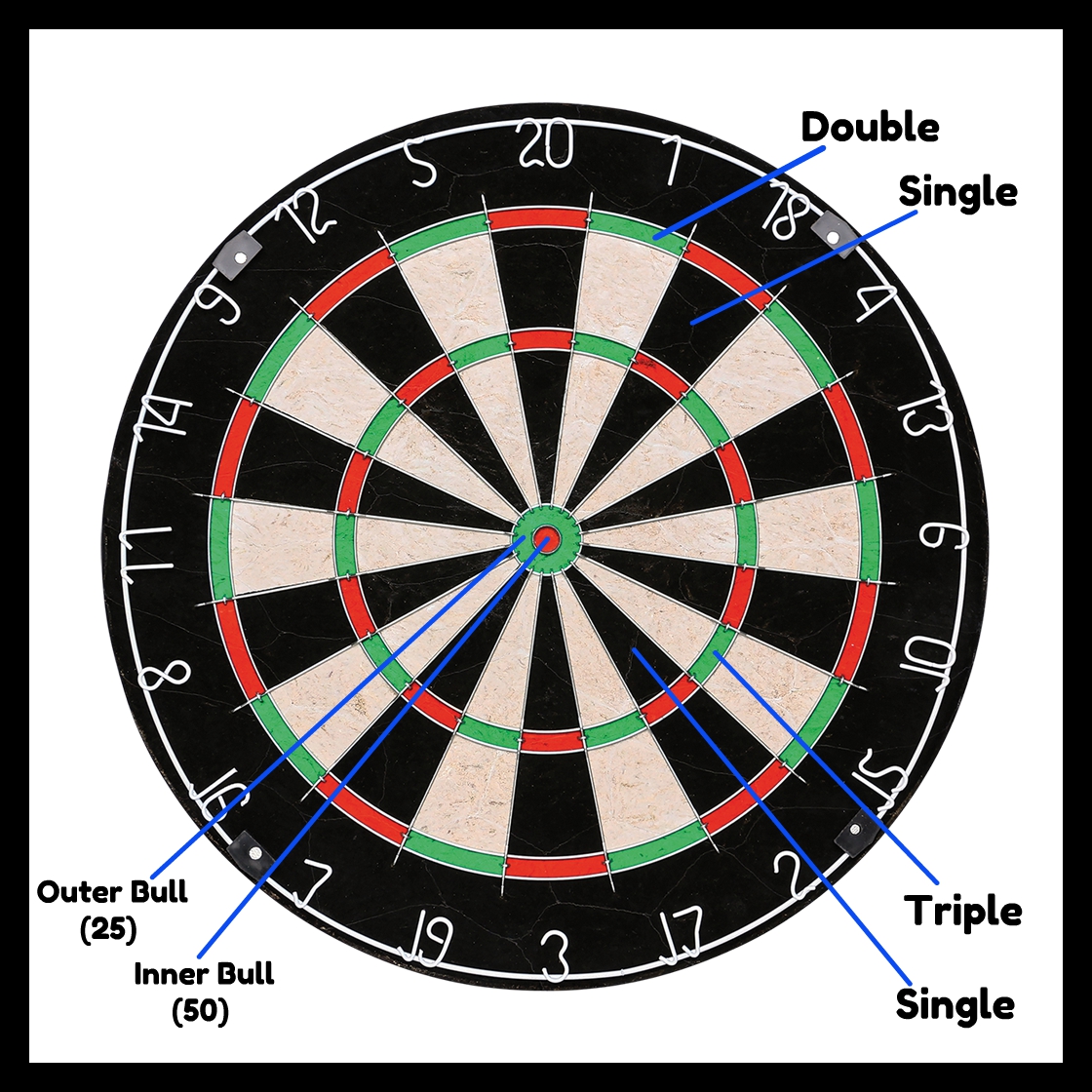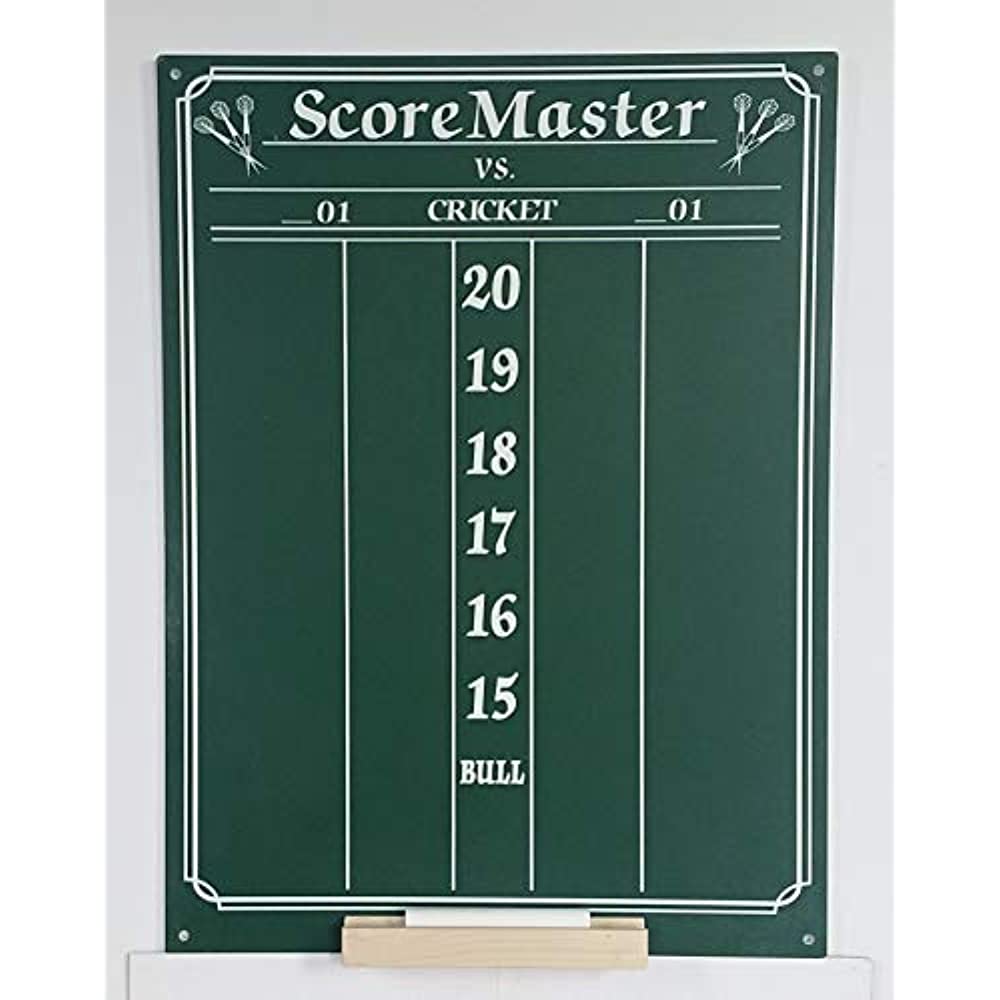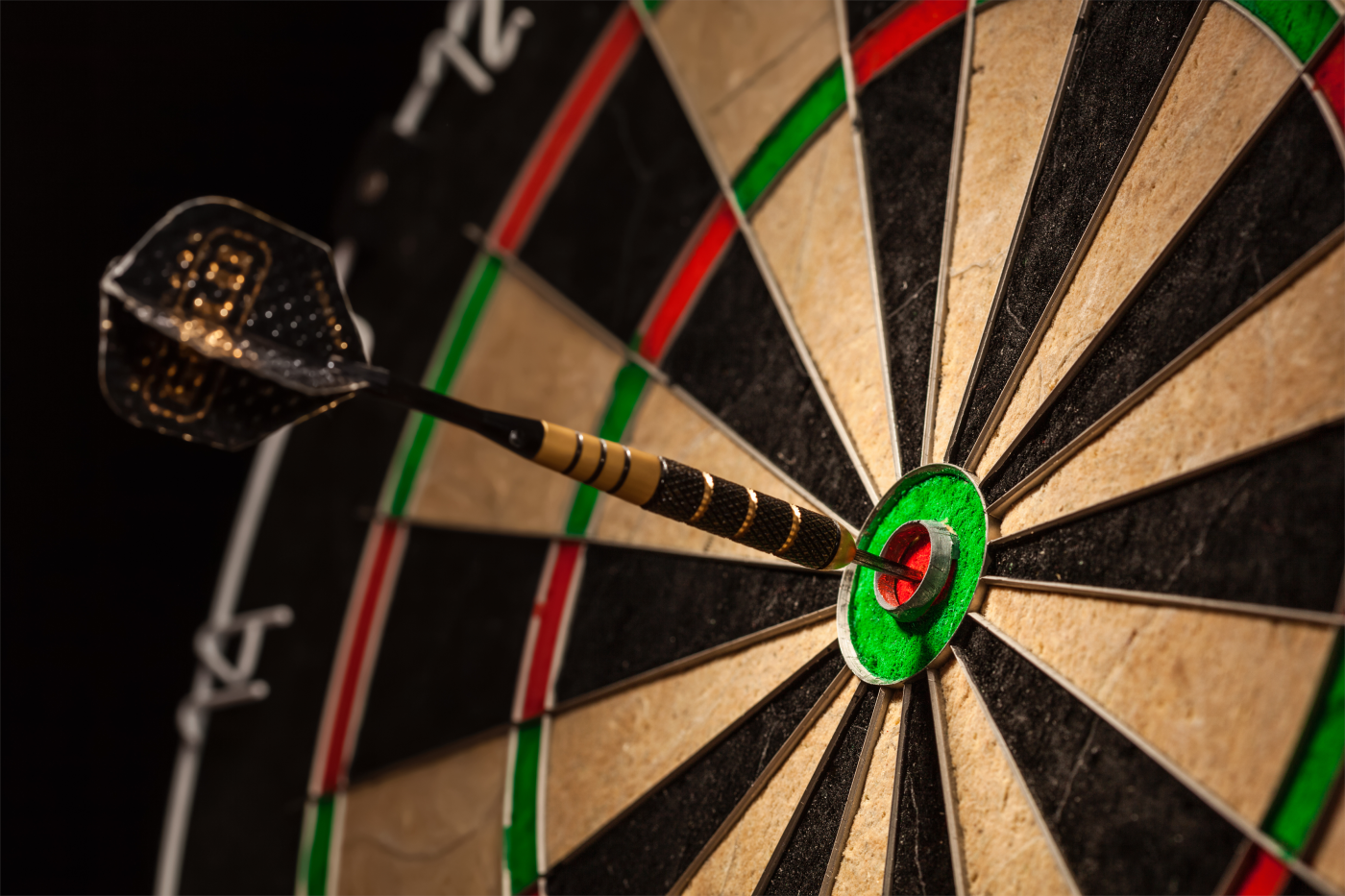The ol’ pub game of darts is the sophisticated gentleman’s game of precision and gentility refined over many generations…no, just kidding. It’s just simply the best game you can possibly play over a pint. Or gin. Or rum. Or pretty much anything. It’s fun, global, and it gives you something to do when the booze makes you twitchy.
I love darts.
Or, I think I love darts. I mean, I used to play on a velcro dart board that I was awarded for selling enough salami and chocolates at my third grade school fundraiser. And that was fun. Until the little velcro dots fell off the plastic dabbers, which never really stuck to the board anyway. But I felt cool thinking I was playing something resembling darts.
The real thing has been too intimidating. People who play real darts play it FOR REAL. And they don’t tend to like when amateurs step on their turf. It’s like that guy in the bowling alley in 2010 who screamed in my face and tried to have me forcibly evicted because I was there with my preschooler mid-afternoon and took four photos of her rolling the ball with her teddy bear. I was distracting to his very professional practice game. When he got in my face, I looked him in the eyes and told him to go fuck himself. I swear he really considered hitting me in the face.
That’s the type of shit that has scared me away from learning real darts. My teddy bear, too.
But it’s time. My husband received a real dart board (with pokey darts and all) for his birthday, and while I can hit the damn wall circle, I have no idea how to score or even take turns.
Hence this post.
Com’on gang. Let’s learn how to play darts. Real darts.
Know Your Dartboard
We can get into fancy lingo in a bit, but for now, take a look at a typical dartboard here.
You can figure your points based on where your dart hits. The numbers encircling the board indicate how many points you get depending on which wedge you hit (value between 1 and 20). If you manage to land in the thin red or green rings, you get either double or triple those points. (The outer black ring gets you nothing!) Take a look below.

As you can imagine, the bullseye is the ideal. Hitting the green “outer bull” is worth 25 points, and the red “inner bull” is worth 50 points.
Grab Your Darts
Each player will have three darts to throw, and will be required to stand firm-of-foot on a designated line while throwing. Choose the first player by having each player throw a single dart at the same time. The closest to the bullseye is the first player.
Then play begins, during which each player will throw three darts, the board will be cleared, and the second player will throw their three darts. On and on it goes until there is a victory.
Time to Play!: 501
There are several ways in which to “play darts”. Let’s start with the classic British pub version of the game–and the one used in most tournaments– which is called “501”.
Each player begins with a score of 501, and your goal is to reduce that score down to zero before your opponent does. The score for each of your throws is deducted from your running 501 total.
What makes this extra tricky is one important rule: Each player must reduce their score to EXACTLY zero in order to win.
This means that if any of your darts causes you to go below zero, then you have “gone bust” and you lose your turn immediately. A player may win on any throw during their turn. That’s it! It’s surprisingly easy.
Variation: The game can be played starting with any number ending in “01”. So 301, 701, 901, and 1001 can be fun alternatives to the classic 501.
Variation: There’s an added requirement to win–the winning player must reach exactly zero by scoring in a double-point segment (the thin outer ring). (This is called “doubling out”.) This is a very common variation and is used in most tournament play.
Variation: Let’s make this really hard. Not only do you need to “double out” to win, but you can’t even begin reducing your score at the start until you hit a double-point segment. (This is called “doubling in.”) This is not used as often, and is quite the challenge.
Time to Play!: Cricket
If 501 doesn’t tickle your undercarriage, then consider its American cousin: Cricket. This is the second-most popular darts game in the world. I think.
Here’s how it goes: You’re only interested in the board wedges numbered 15 to 20, plus the bullseye.
Remember that. Any number wedges numbered 1 to 14 are worthless, and hitting them can just be considered a miss.
What you need to do is “close out” each wedge from 15 to 20 (plus the bullseye). You do so by striking each number a total of three times. And by three times, I mean, three singles, a double + a single, or one triple.
Keeping track of which wedges are open and closed for each player is done via the scoreboard (of course!). You’ll notice that most dart scoreboards have a center column labeled for each number and “B” for bullseye.

Mark your strikes by starting with a slash ( /). Then on your second strike, turn that slash into an x. On your third strike, circle the x. For example, if you have a circled x next to the number 15, then you have closed it! Congrats! Keep going until you’ve done so for all of the numbers (and the bullseye).
Once you’ve succeeded in closing out a number, and if your opponent hasn’t managed to close it yet, then you “own it”. That’s fantastic! That means from then on, each time you hit that wedge you own, you start scoring! Add the numerical value of points you scored with your dart to your scoreboard (next to your circled x).
Once your opponent also closes that same number, then the number is dead and unscorable.
The winner is the person who closes out all the numbers (and bullseye) first–UNLESS the opponent has a higher score. Then the game keeps going until one person has all the numbers closed AND a higher score than the other player. There are no ties in Cricket Thunderdome.
Variation: Cutthroat Cricket is for 3 players. The idea is the same, except that once you begin scoring after closing out a number, you give away the points you’ve scored to an opponent of your choice. And the person with the most points loses! This means that if Player C is struggling, Player A can start dumping points on Player B.
There we are! Two games out of, probably, thousands. Personally I wish there was a version where you earn points for your dart landing in your beer. But maybe I’m just ahead of my time.
As for all the persnickety talk you’ll hear about the lingo, tournament distances, and even appropriate clothing attire, most people will shut their yaps about it if you just pay for the round of pints. The whole idea is to have fun and hopefully not kill anyone. Now go dart up!





Leave a comment